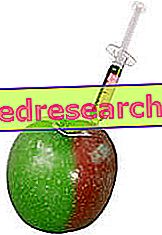
Recently a certain media emphasis has been given to the results of a research by the University of Groningen, in the Netherlands, published in the journal Plos One. According to the authors of the study, chewing for ten minutes an unsweetened chewing gum would be able to "trap" about one hundred million bacteria, reducing the microbial potential of saliva by 10%.
In particular, the antimicrobial retention property of chewing gum would be more effective in the first thirty seconds of chewing. After this period of time, the elasticity and adhesiveness of the chewing gum on the teeth decrease and with them the ability to retain a high number of bacteria.
The maximum anti-plaque benefits would be chewing sugar-free chewing gum for no more than ten minutes, which coincides precisely with the transfer of about one hundred million microbes from the oral cavity to the gum. After 10 minutes of chewing, you can run into the opposite effect, that is, some microbes "passed" on the chewing gum return to the oral cavity.
Chewing too long a cheving-gum could also create particular problems for those suffering from tension headaches, joint pains or cranio-mandibular disorders, aggravating the basic problem.
The authors of the study even go so far as to consider the anti-plaque effectiveness of chewing gum that overlaps with that of dental floss. Although the results of the study justify this claim, it is important to consider that this is true only when the yardstick is the total number of bacteria removed. In fact, while the rubber acts mainly on saliva, on the tongue and on occlusal surfaces, the dental floss goes to remove plaque and food residues in the interdental spaces, where the rubber and the toothbrush do not arrive.
Although chewing gum cannot replace the action of floss, let alone that of toothpaste and toothbrush, sugar-free chewing gum can still bring some benefit in preventing tooth decay. First of all because, as demonstrated by the study, they perform a mechanical action to remove bacteria; secondly because they increase the secretion of saliva (which contains immunoglobulins, lysozyme and bicarbonates that buffer acidity); thirdly because xylitol - now ubiquitous in sugar-free chewing gums - has a modest antibacterial activity.
Bibliography
PLoS One. 2015 Jan 20; 10 (1): e0117191. doi: 10.1371 / journal.pone.0117191. eCollection 2015.
Quantification and qualification of bacteria trapped in chewed gum.
Wessel SW1, van der Mei HC1, Morando D2, Slomp AM1, van de Belt-Gritter B1, Maitra A2, Busscher HJ1.



